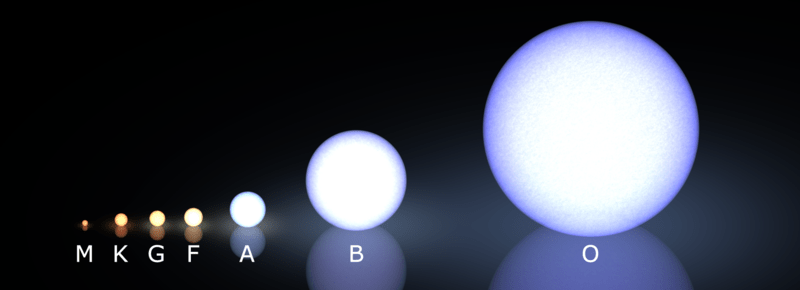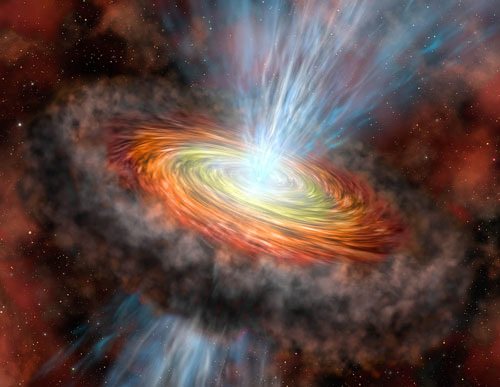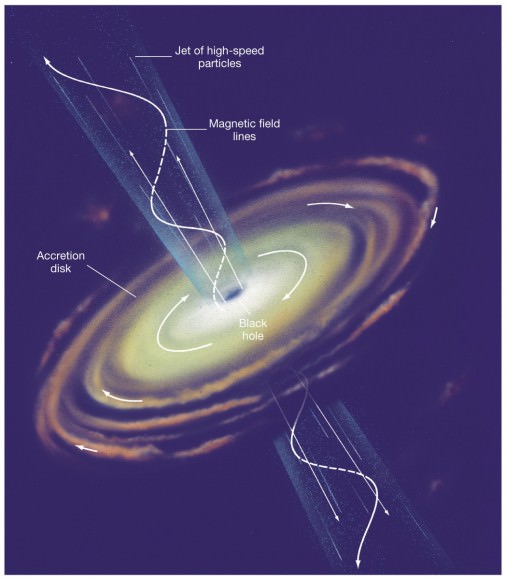[/caption]
The primary method by which astronomers can measure magnetic field strength on stars is the Zeeman effect. This effect is the splitting of spectral lines into two due to the magnetic field’s effect on the quantum structure of the orbitals. For massive O-class stars, their spectra are largely featureless in the visual portion of the spectra due to an insufficient number of atoms with electrons in the necessary orbitals to undergo transitions which can produce visual spectral lines. Thus, determining whether or not these stars have magnetic fields has been a unique challenge. A new paper from researchers at the University of Amsterdam, led by Roald Schnerr, looks for evidence of these fields in the form of synchrotron radiation.
Synchrotron radiation is a form of light produced when relativistic, charged particles move through a magnetic field. The light emitted can be generated in any portion of the spectra from radio to gamma rays, depending on the strength of the field. Astronomically, this was first detected in 1956 by Geoffrey Burbidge in the jets of M87 and has since been used to explain emission in planetary magnetospheres, supernovae, near black holes, and around pulsars.
This form of energy distinguishes itself from other forms of light in two main fashions. The first is that it is highly polarized. This property is generated by the electric and magnetic components always being in the same planes and can be studied with filters that only allow light with its fields in appropriate planes to pass. The second is that the radiation created is “non-thermal”. In other words, it doesn’t match the distribution of wavelengths generated by a blackbody.
Models of massive, O-class stars suggest they should contain magnetic fields. Some evidence has seemed to confirm this. Previous studies have also shown that the stellar winds from some of these stars varies with timescales similar to the rotation rates of the stars which could be interpreted as winds being slowed on some faces by the magnetic field as it swept by.
Schnerr’s team attempted to bolster the evidence for magnetic fields by detecting the non-thermal radiation from these stars. The team selected 5 stars which have been shown to have strongly variable winds, some with cyclic variations and used the Westerbork Synthesis Radio Telescope, in the Netherlands to search for non-blackbody signals. The radio range was selected due to the predicted magnetic field strength.
Ultimately, only three of the five selected targets could be observed with the chosen telescope and only one of those, ξ Persei, showed evidence of a non-thermal spectrum. But while this strengthens the case for magnetic fields on the star, it raises another question: From where do the relativistic particles originate? Although O-class stars have strong stellar winds, their speeds are well studied and well below the necessary velocity.
One clue could come from the fact that ξ Persei is a “runaway star”. These stars have velocities and plunge through the interstellar medium at 30-200 km/sec. The team suggests that a bow shock created by this motion could result in sufficiently high velocities. Whether or not ξ Per has such a bow shock is something that could be determined with additional observations.
While this research provides some interesting clues to the nature of these magnetic fields on these stars, it still relies on a small sample. This technique can certainly be expanded to a larger number of stars in the future and may help astronomers better constrain their models of stellar workings.



